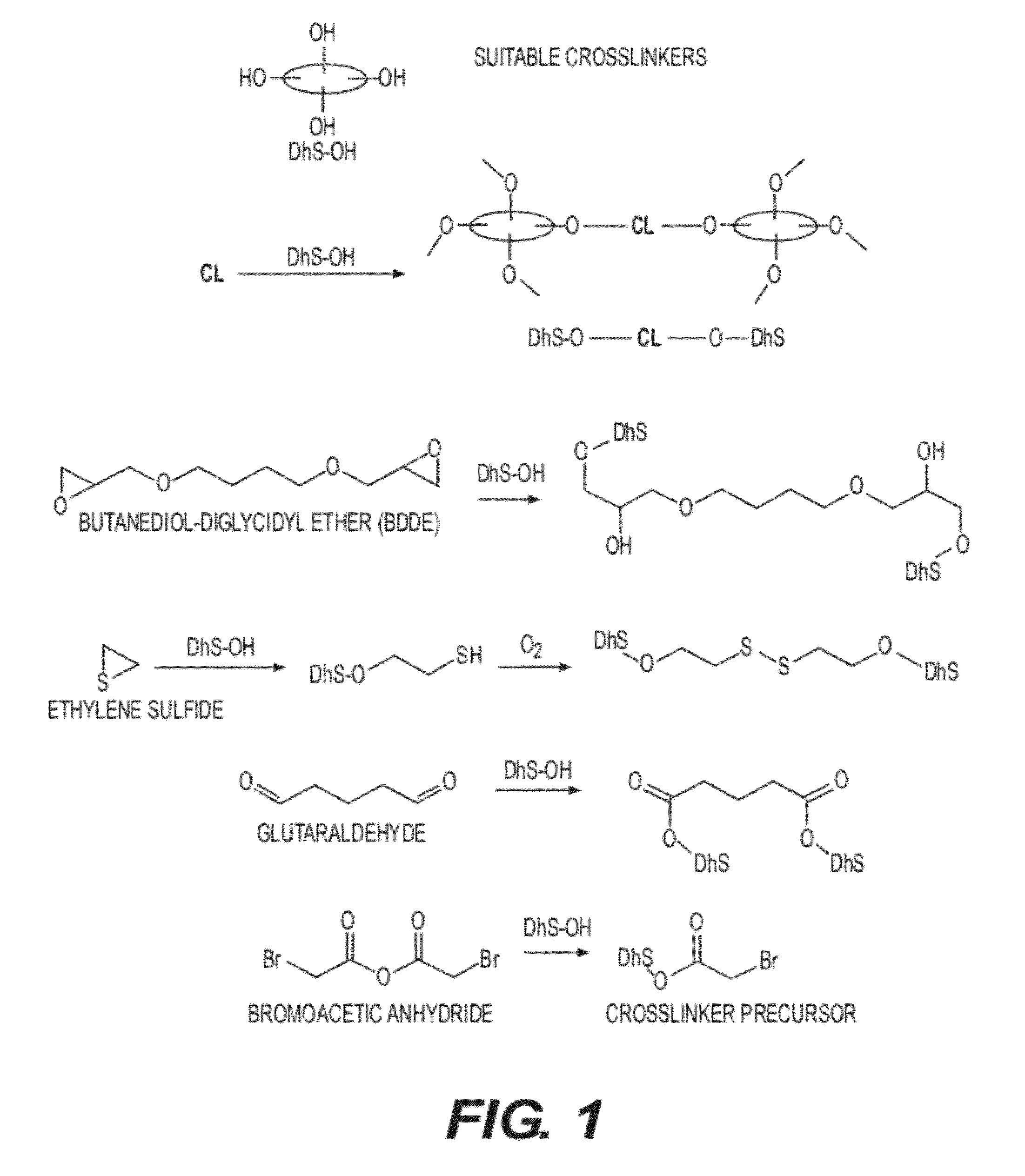Lanthanoid complex capsule and particle contrast agents, methods of making and using thereof
- Summary
- Abstract
- Description
- Claims
- Application Information
AI Technical Summary
Benefits of technology
Problems solved by technology
Method used
Image
Examples
example 1
Materials
[0111]Emulsifying wax was obtained from Spectrum Chemicals. Polysorbate surfactant (Brij® L23) and α-bromo-γ-butyrolactone were purchased from Sigma Aldrich Chemicals. Europium trichloride hexahydrate, gadolinium trichloride hexahydrate, divinyl sulfone (DVS) and potassium carbonate were purchased from Alfa Aesar Chemicals. Hexadecyl trimethyl ammonium chloride (CTA-Cl) was obtained from TCI America. All reagents were used as received.
example 2
Preparation of Cyclen Tetrabytyrolactone
[0112]Cyclen (1.00 g, 5.80 mmol), potassium carbonate (4.00 g, 29.02 mmol) and α-bromo-γ-butyrolactone (6.03 g, 36.57 mmol) were refluxed for 3 days in CH3CN. The filtrate was collected and the solvent was removed by rotary evaporation. A solid product was collected after several ether-wash / centrifugation cycles. The solid was redissolved in 15 ml chloroform, and extracted with 2×5 ml water. The chloroform solution was dried with magnesium sulfate and the solvent was removed by rotary evaporation to affort a yellow oil. Addition of diethyl ether produced the product as a yellow powder in 71% yield.
[0113]1H NMR (400 MHz, CDCl3, d): 4.45-4.25 (m, 8H, O—CH2), 3.95 (m, 4H, N—CH), 3.70-3.49 (m, 4H, cyclen-CH2), 2.70-2.22 (m, 12H, cyclen-CH2), 2.40-2.25 (m, 8H, lactone-CH2); 13C NMR (400 MHz, CDCl3, d): 178.5 (C═O), 65.18 (O—CH2), 59.90 (N—CH), 47.22 (cyclen-CH2), 21.25 (lactone-CH2). ESI-MS m / z: 508.9 [M+H]+, 531.9 [M+Na]+, 546.9 [M+K]+.
example 3
Preparation of CTA-OH
[0114]CTA-Cl was stirred with KOH in anhydrous ethanol to prepare a stock solution of ethanolic cetyltritnethylammonium hydroxide (CTA-OH). The byproduct, KCl(s), was removed by filtration. The sample was stored as a 1 M stock solution in ethanol.
PUM
| Property | Measurement | Unit |
|---|---|---|
| Concentration | aaaaa | aaaaa |
Abstract
Description
Claims
Application Information
 Login to View More
Login to View More - R&D
- Intellectual Property
- Life Sciences
- Materials
- Tech Scout
- Unparalleled Data Quality
- Higher Quality Content
- 60% Fewer Hallucinations
Browse by: Latest US Patents, China's latest patents, Technical Efficacy Thesaurus, Application Domain, Technology Topic, Popular Technical Reports.
© 2025 PatSnap. All rights reserved.Legal|Privacy policy|Modern Slavery Act Transparency Statement|Sitemap|About US| Contact US: help@patsnap.com



